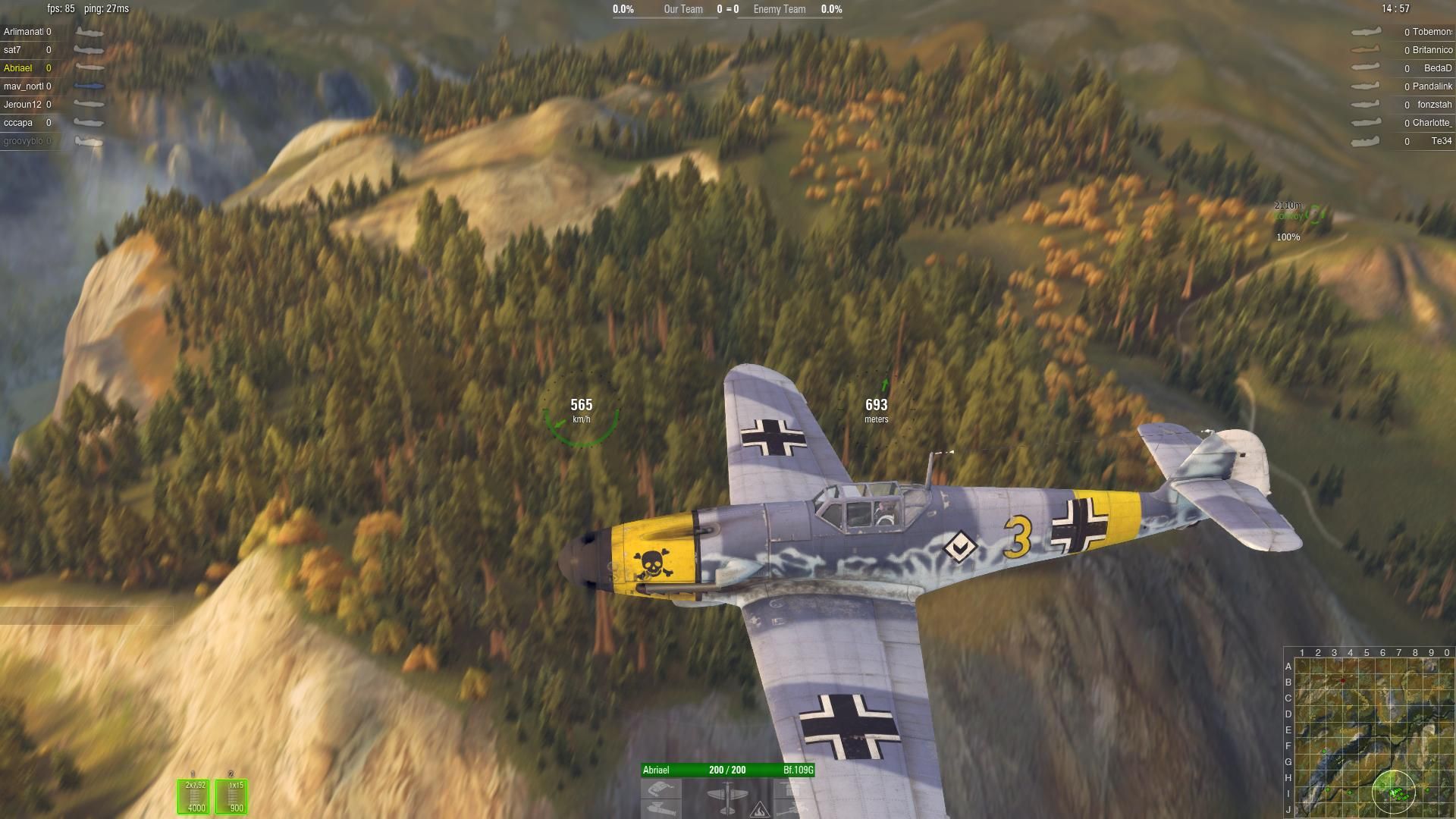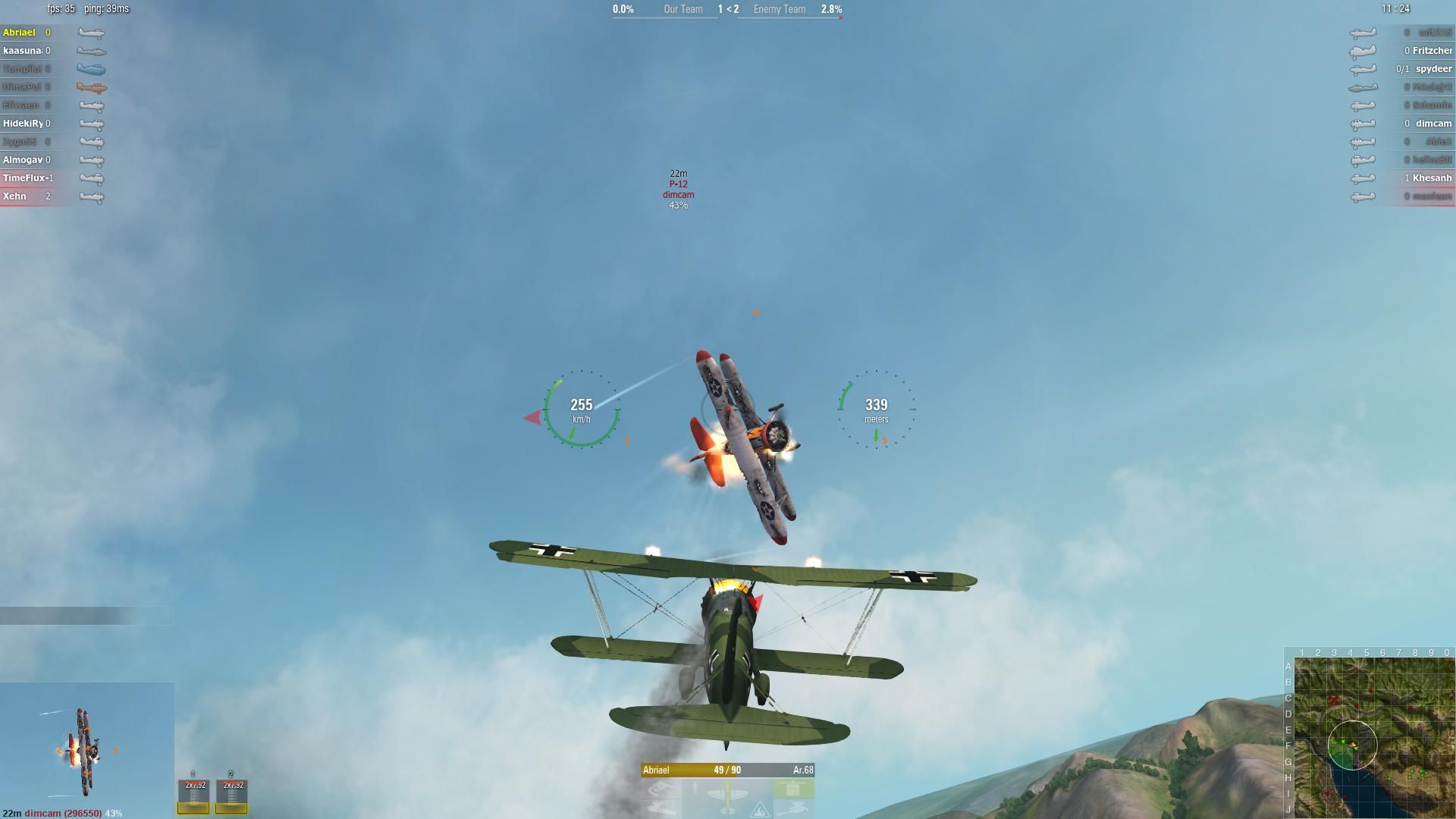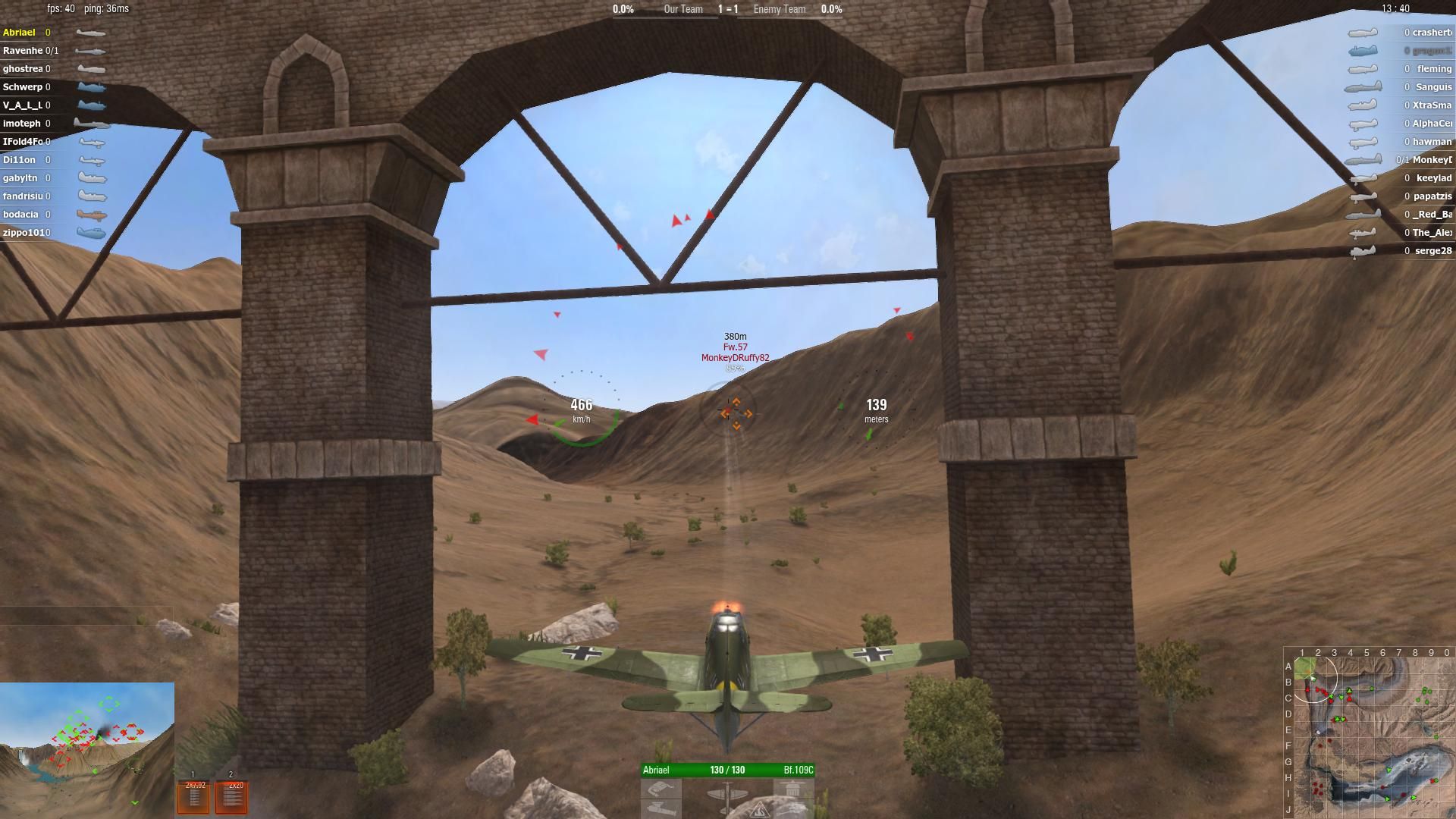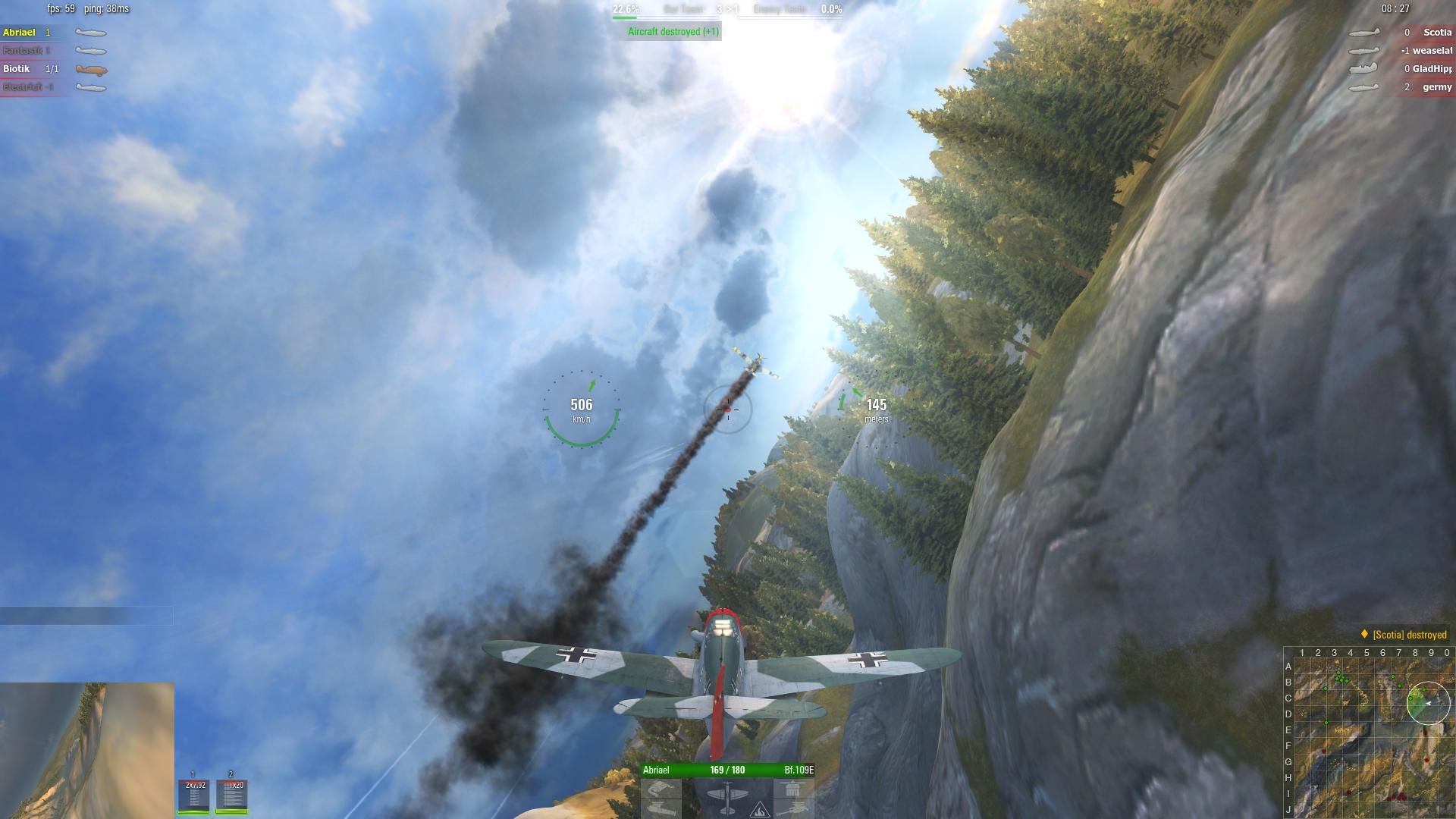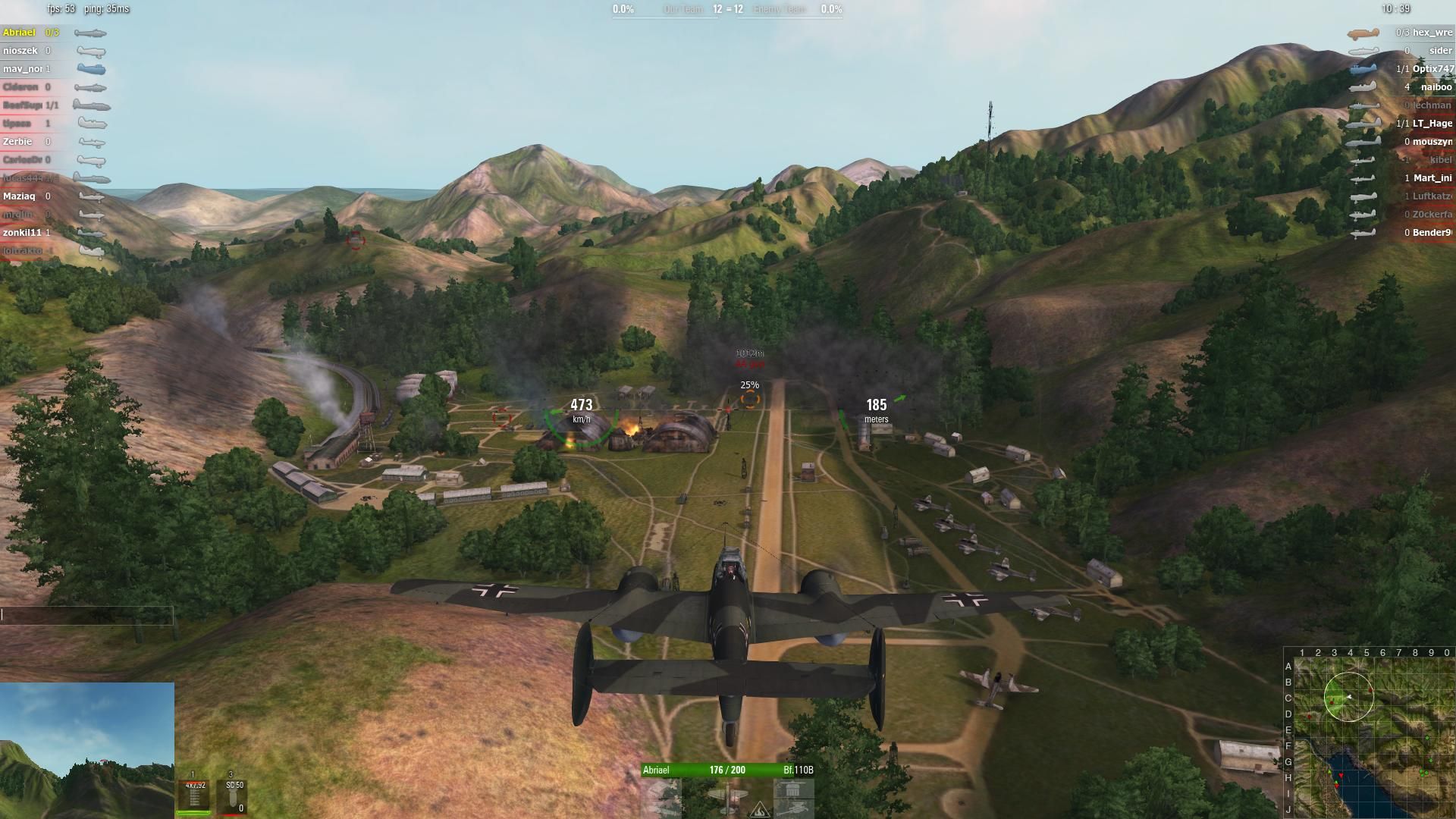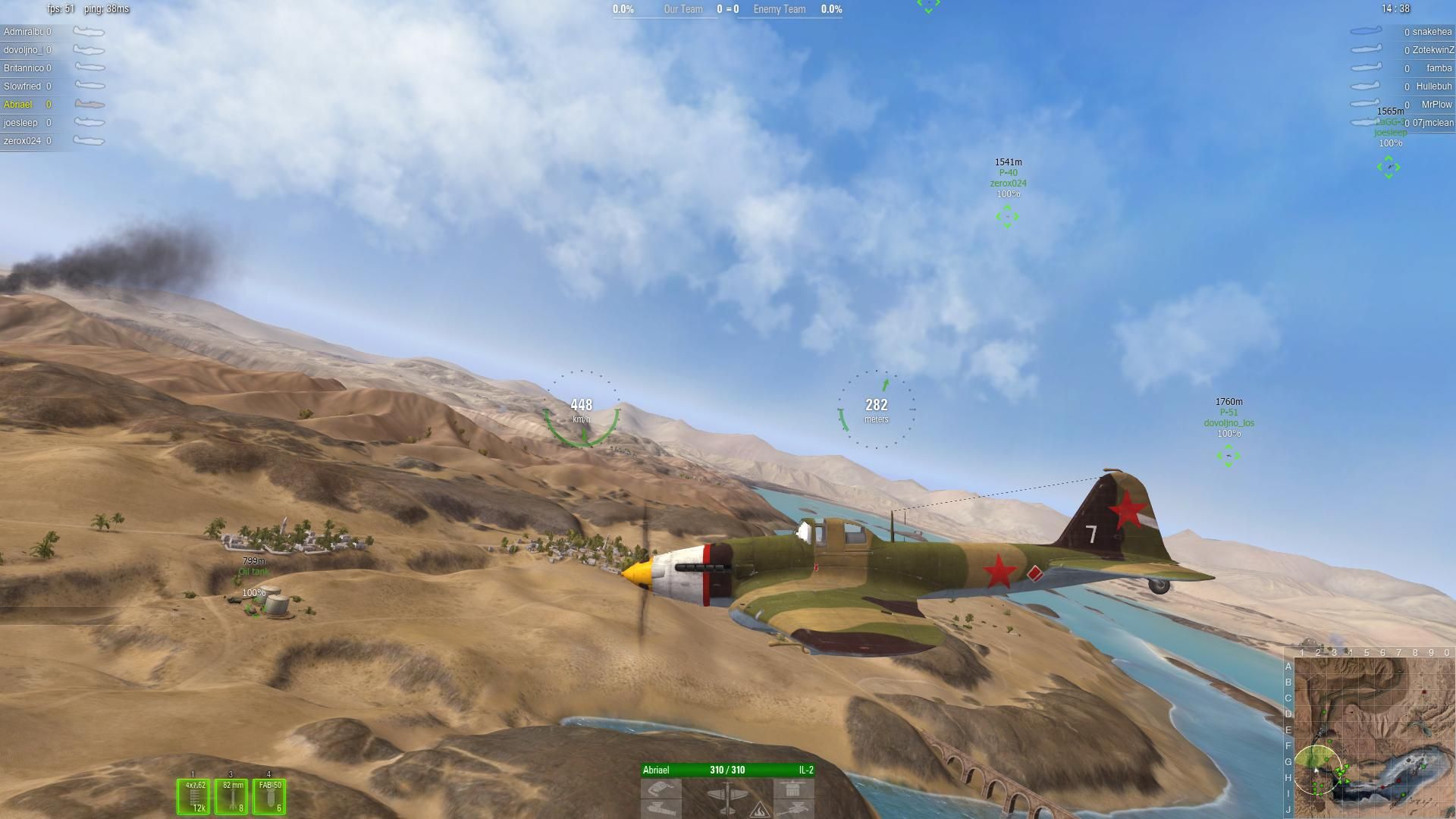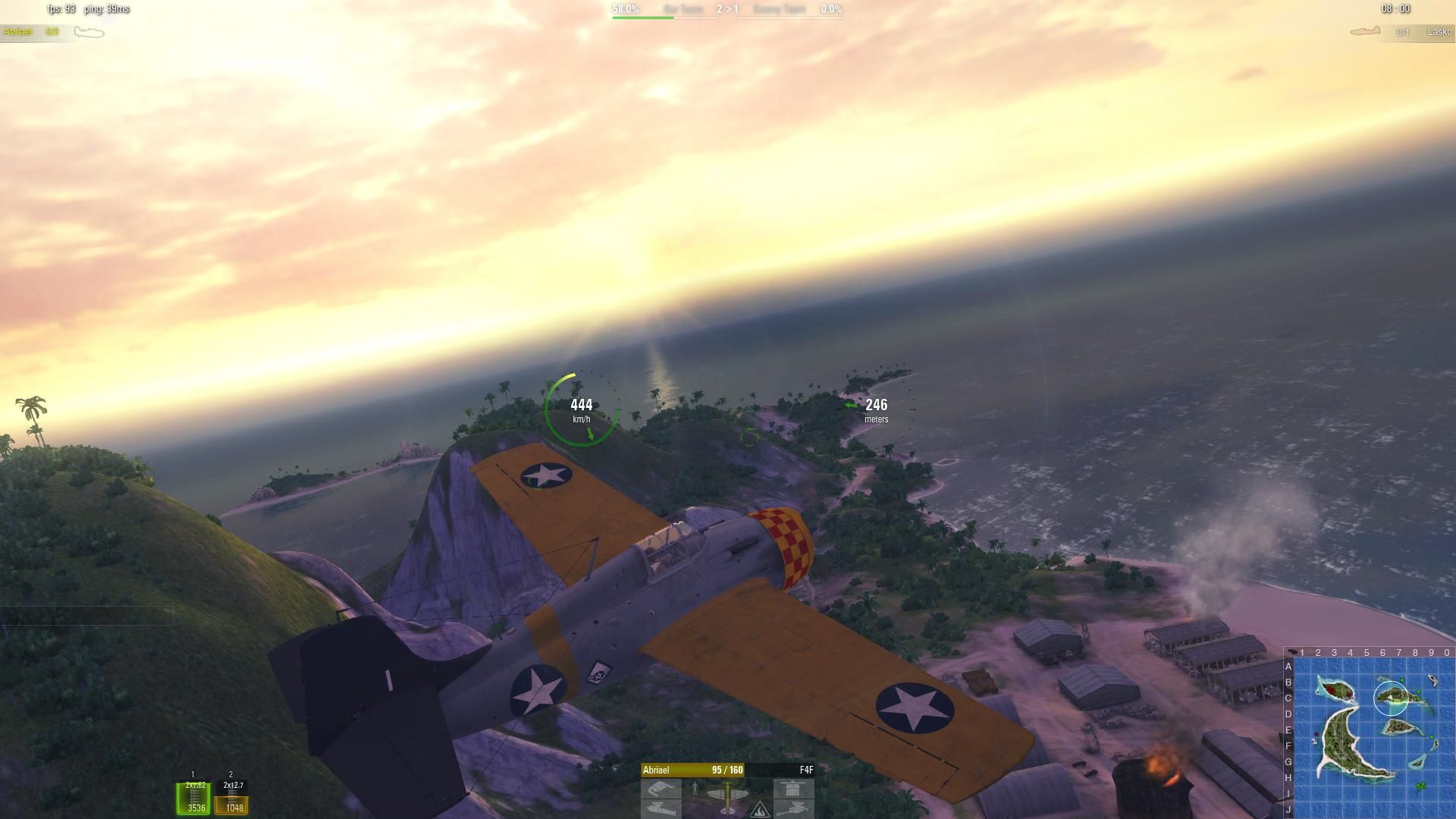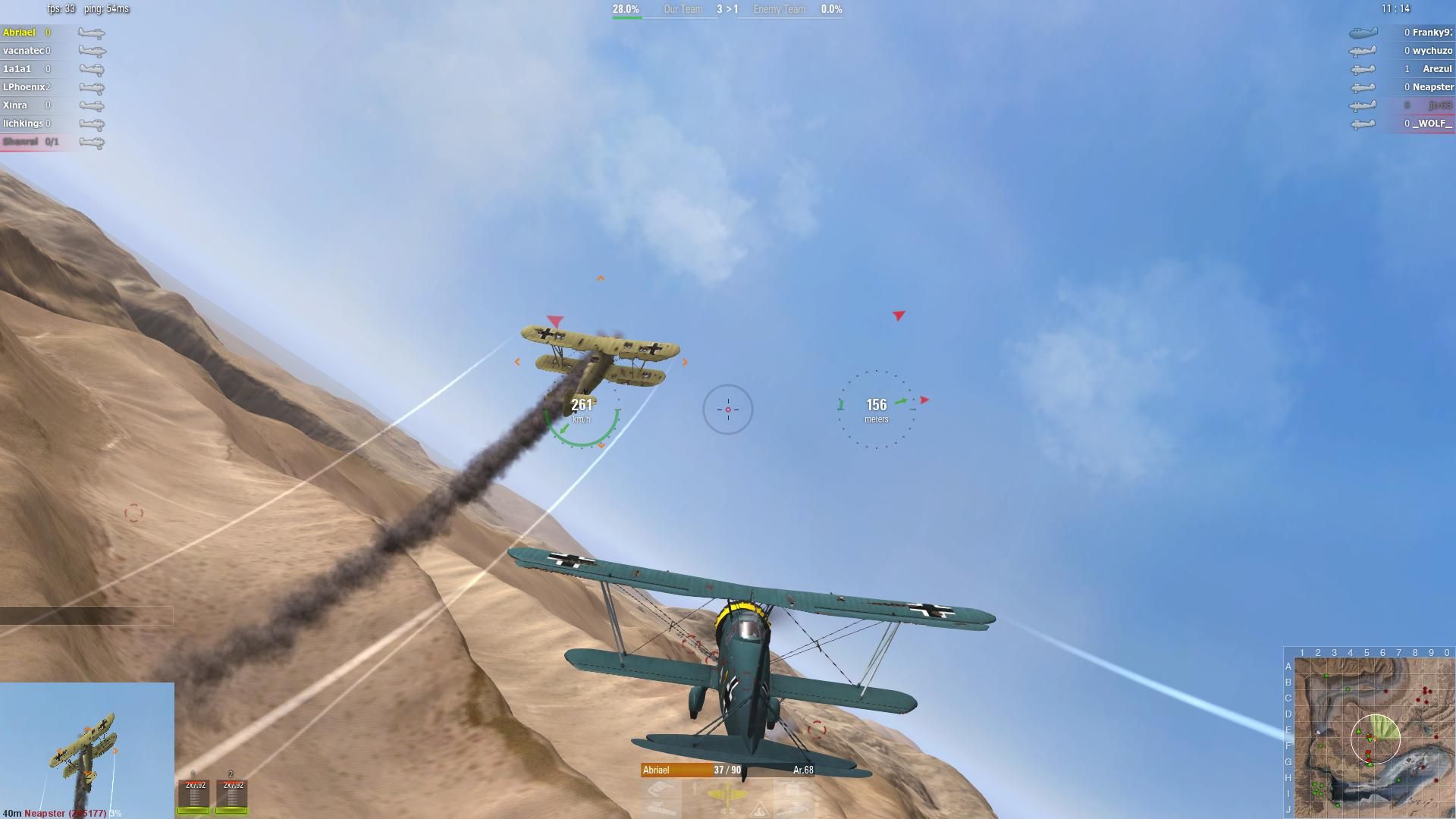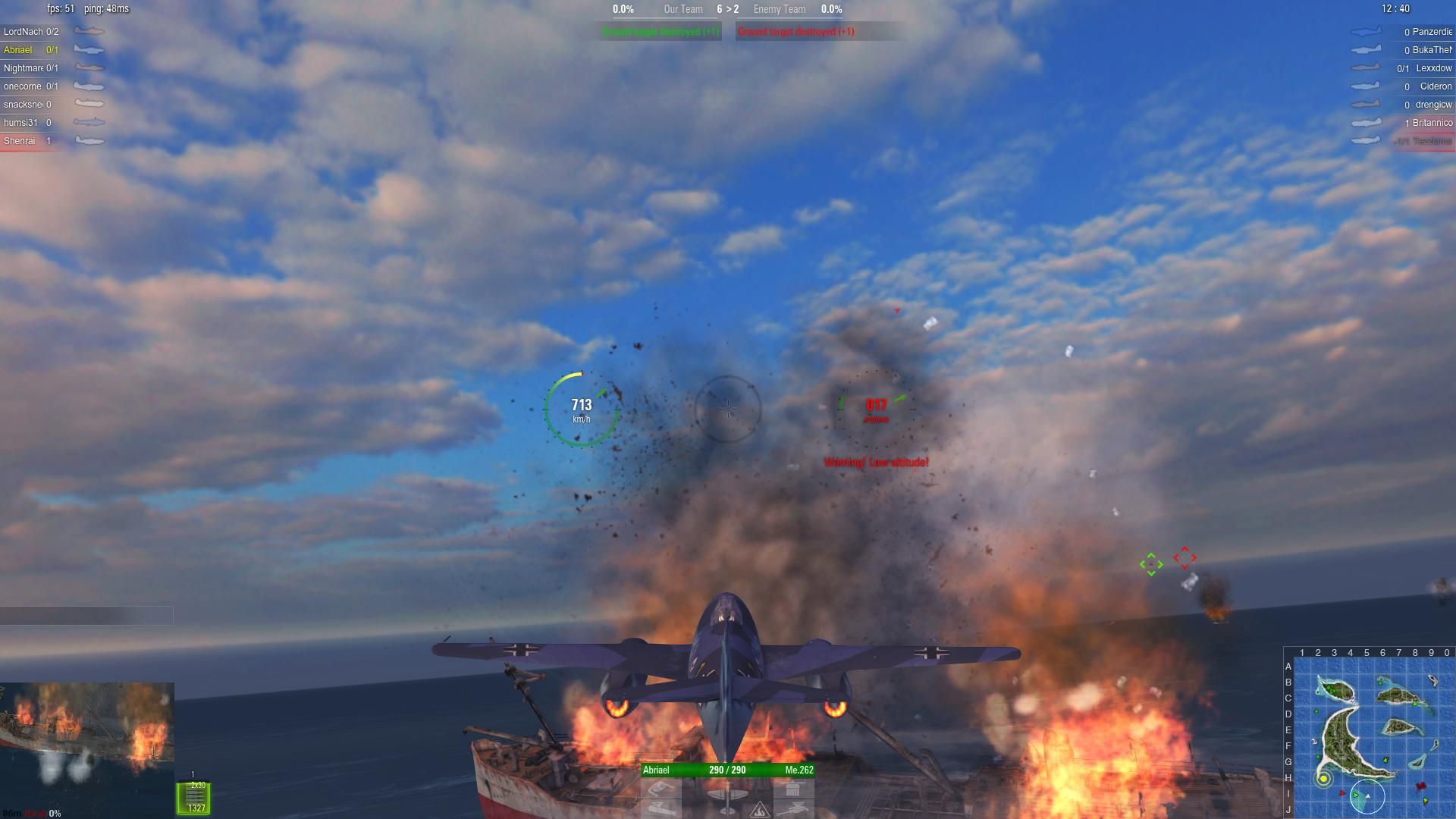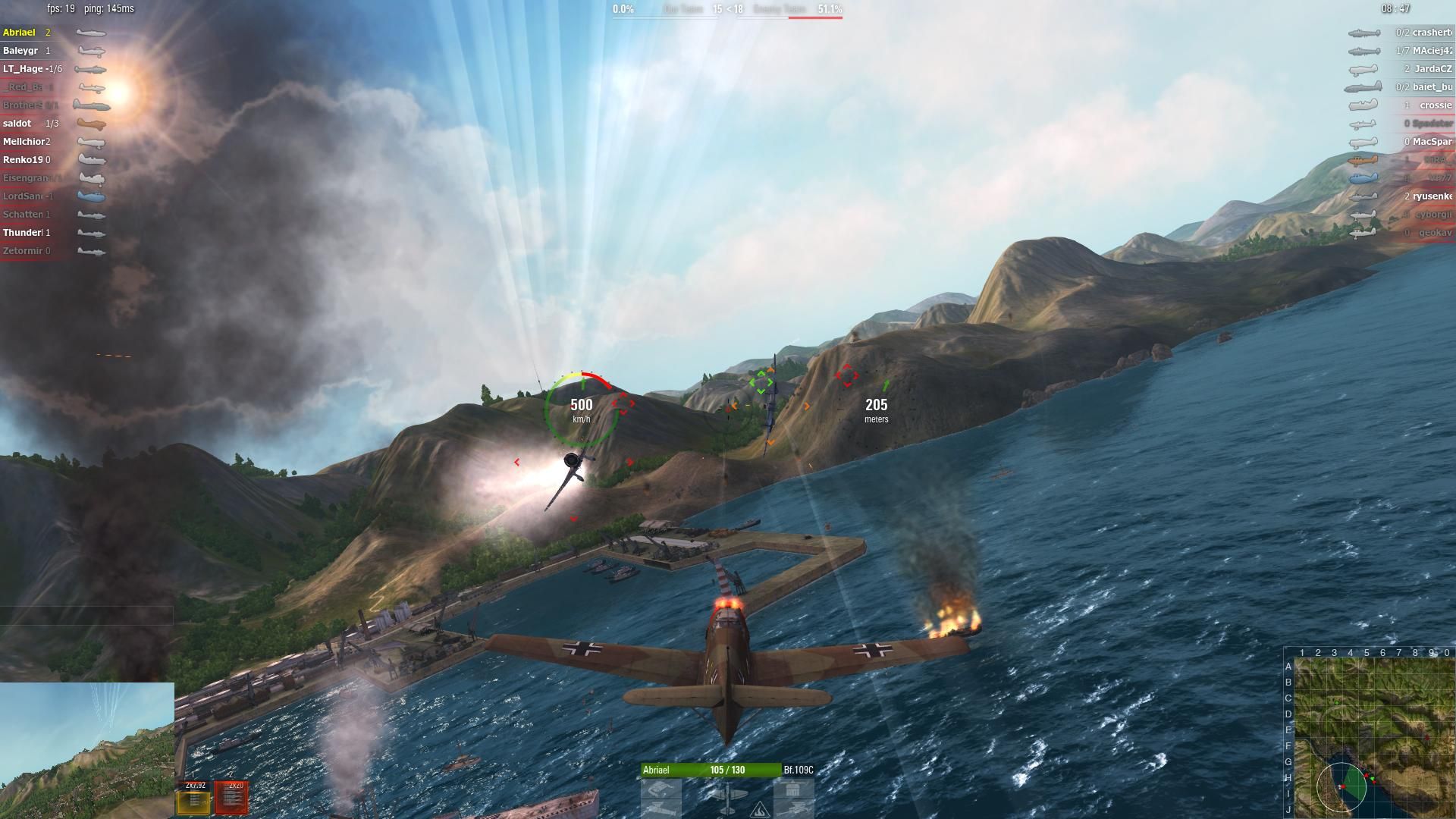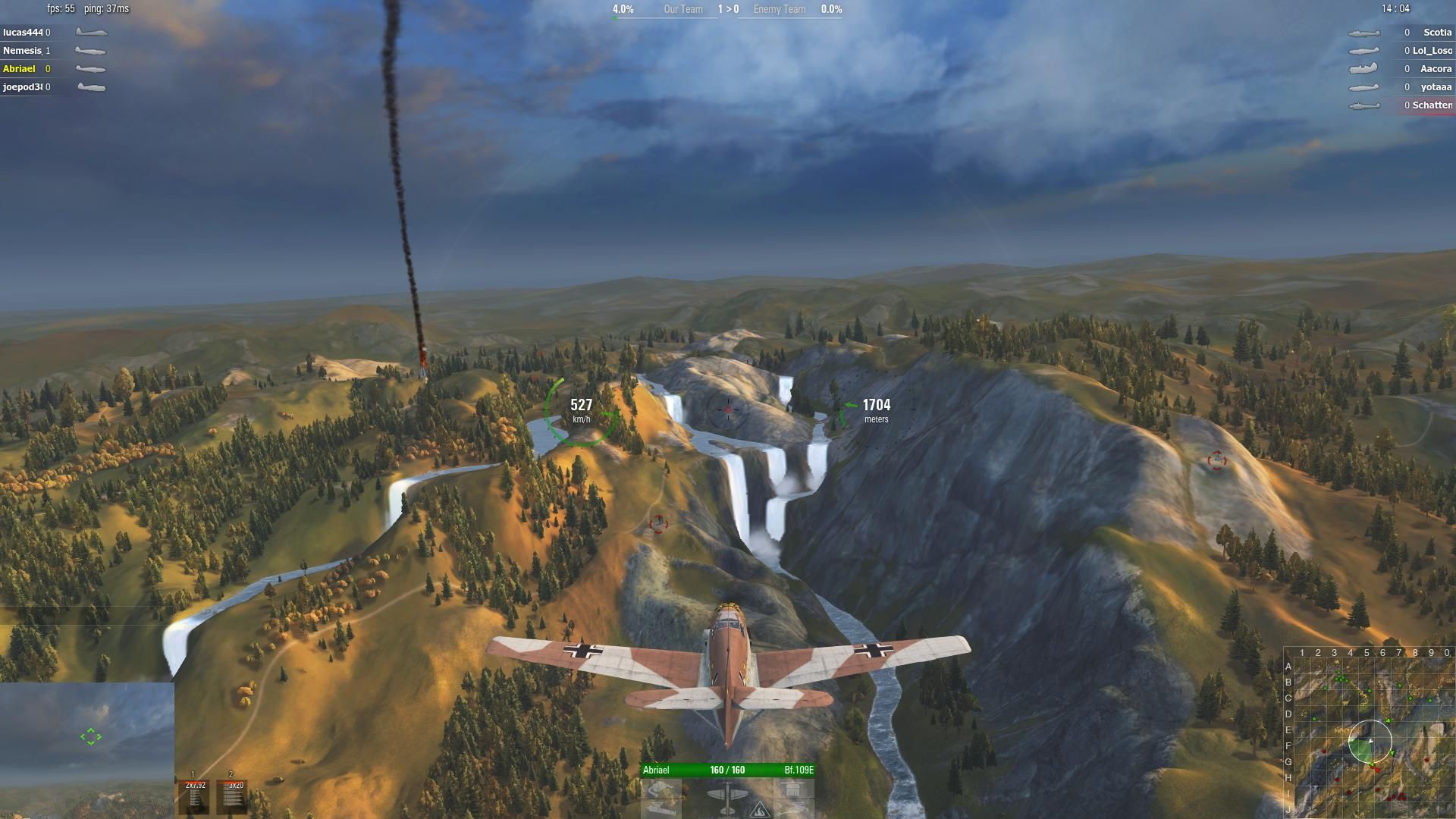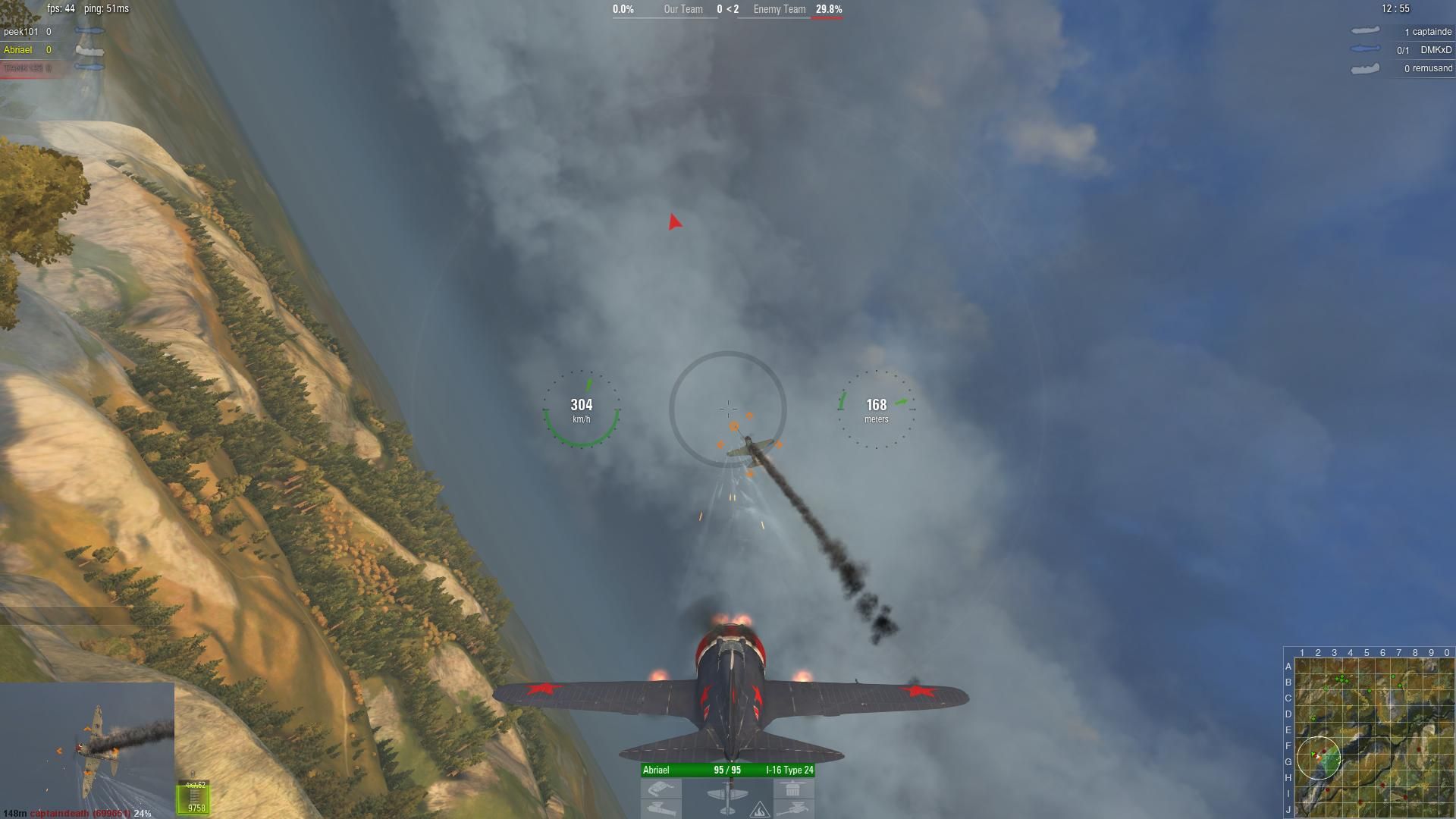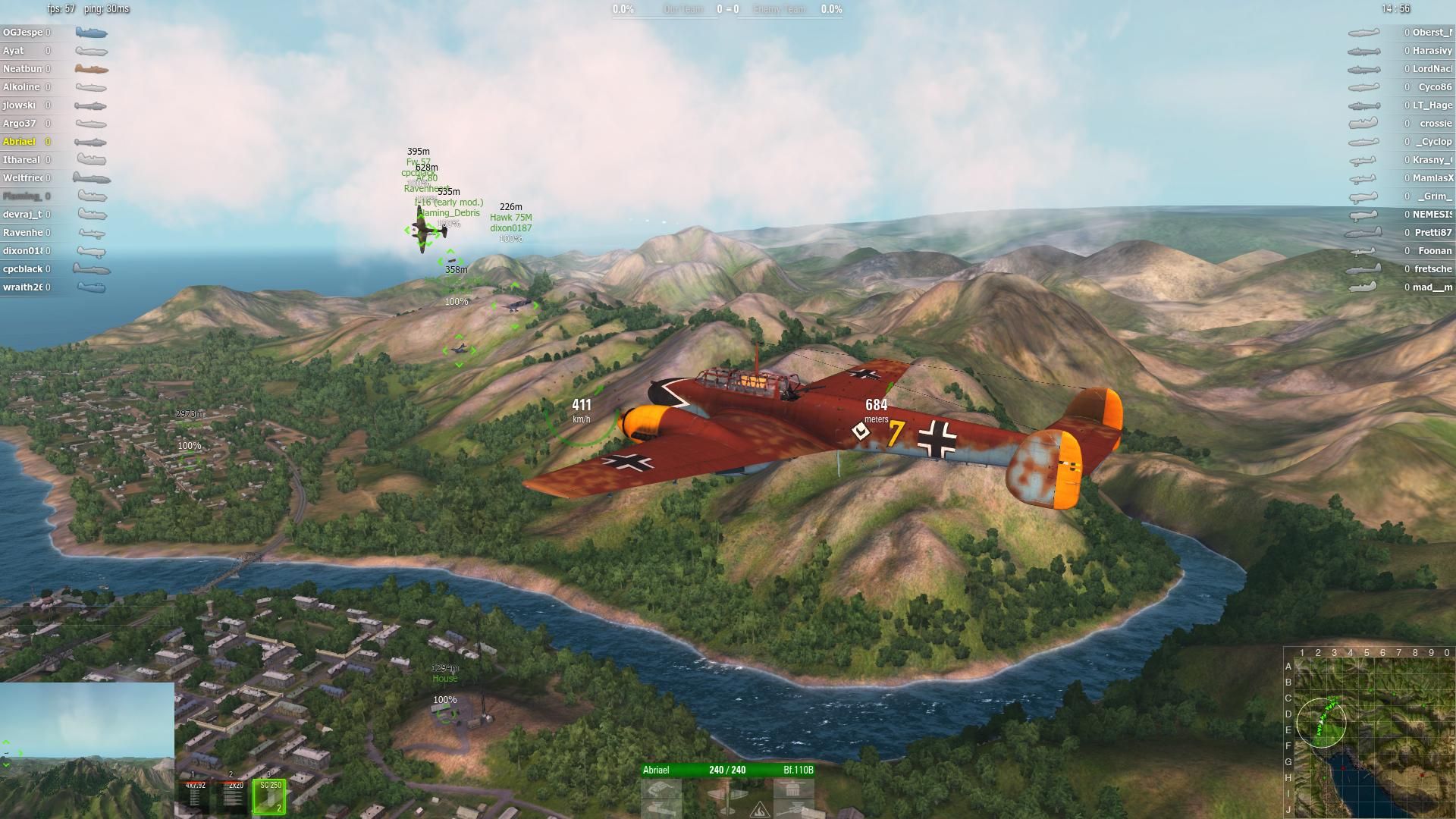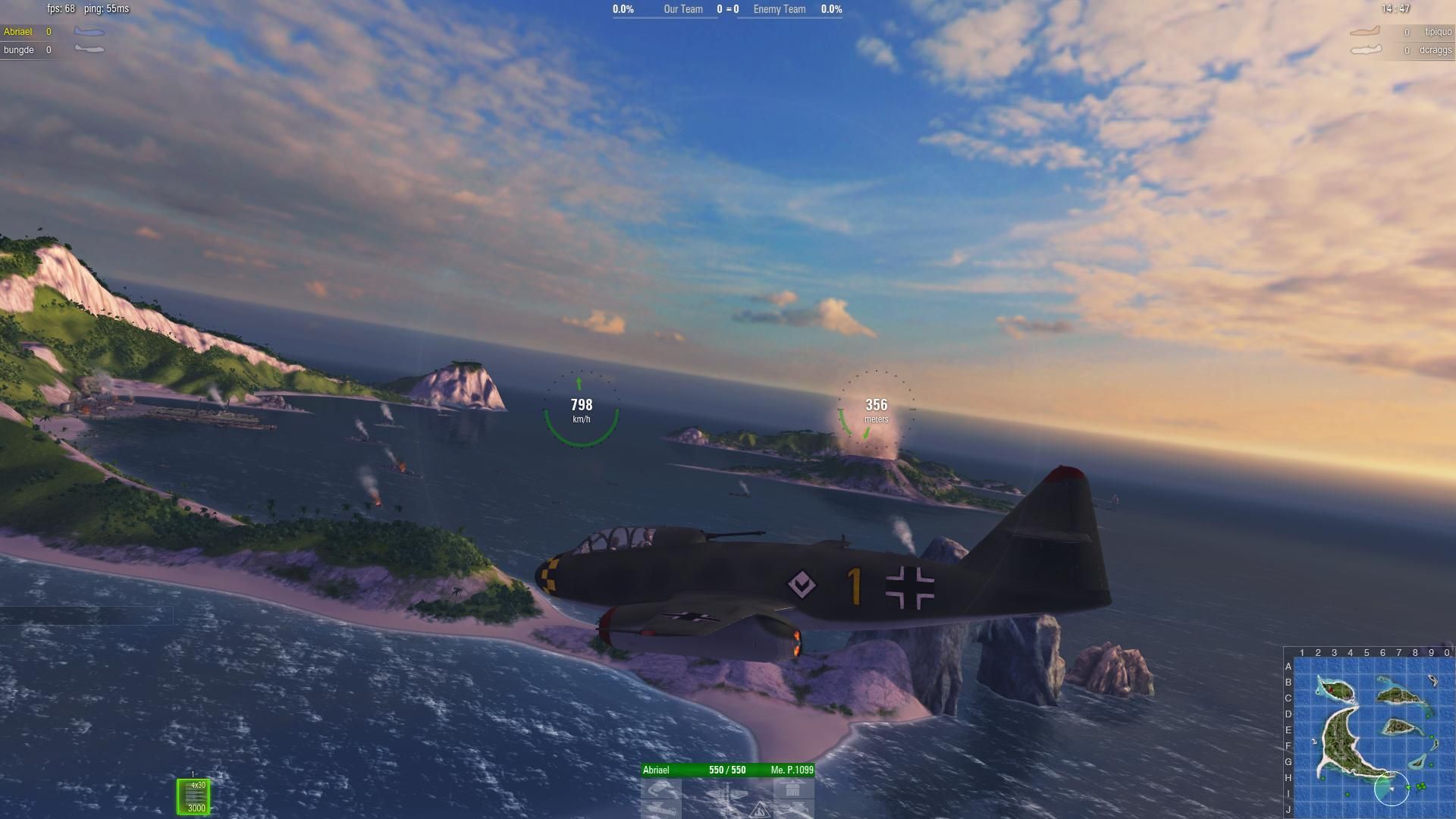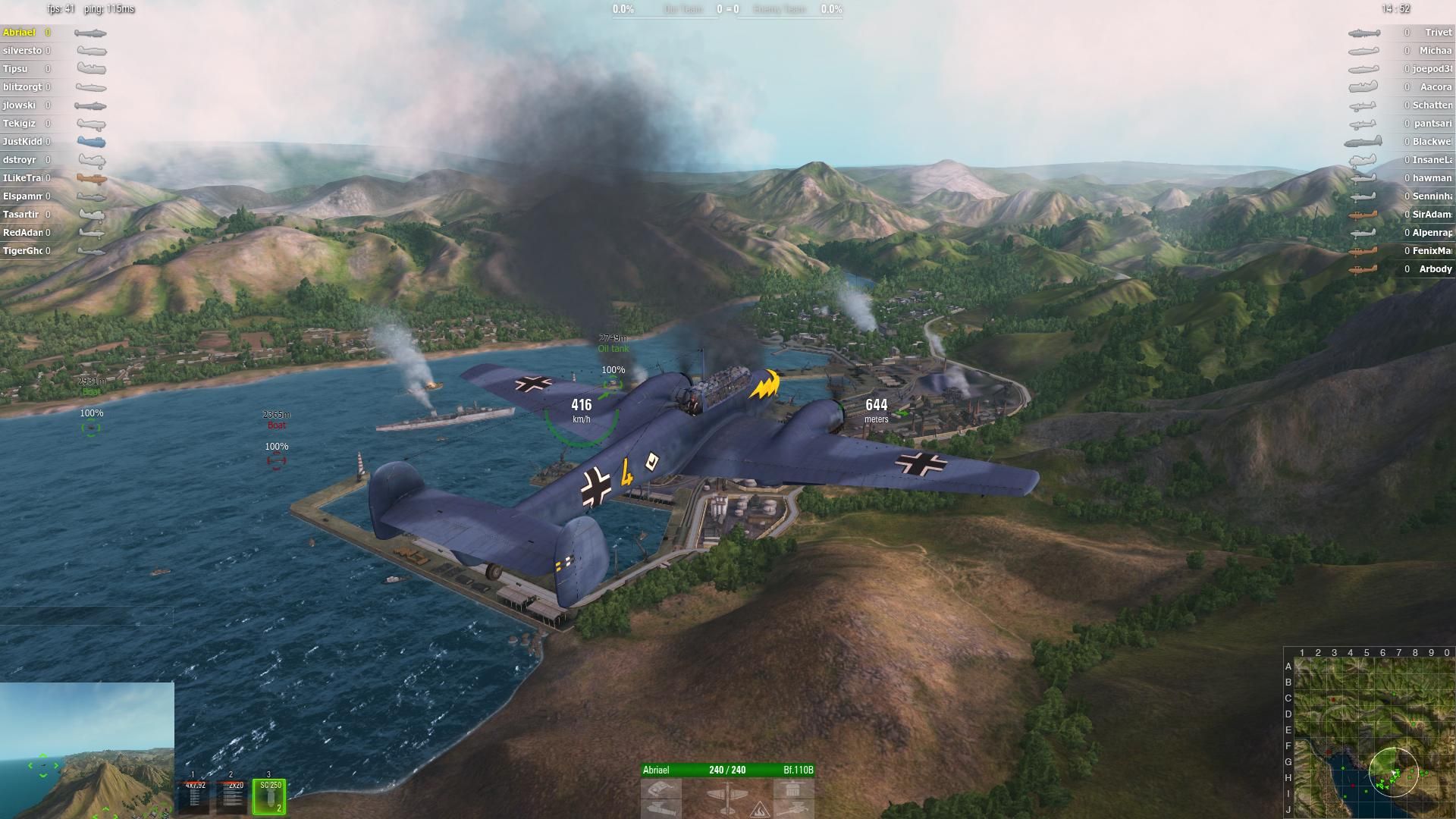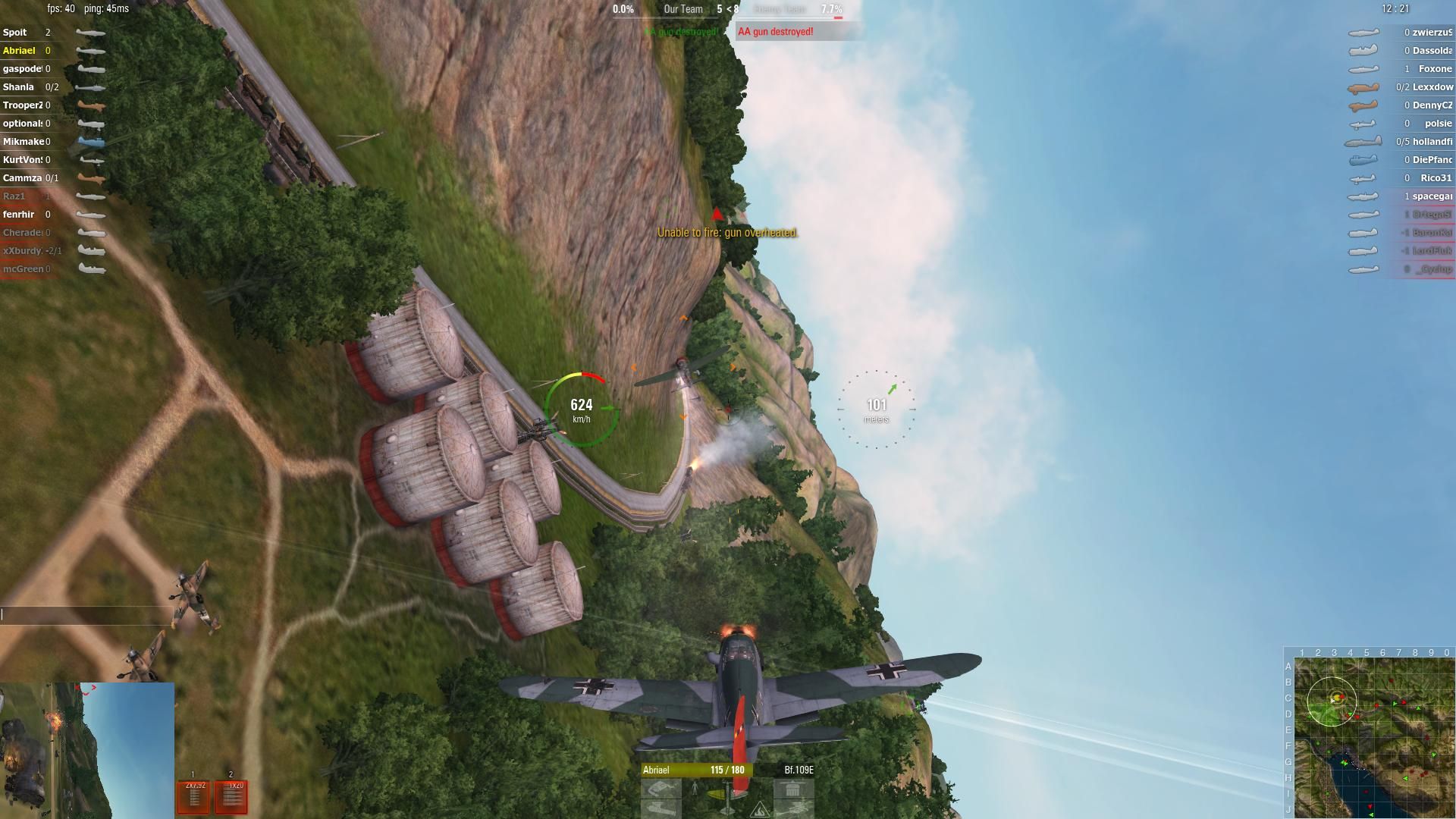Almost a year has passed since my first hands-on preview of World of Warplanes. Back then I played a very early build, but now I had the chance to play the closed beta, which has gone a long way in polish and features.
Visually the game is quite impressive, planes are portrayed in lovely detail, with a large number of liveries for every model, that add to the visual variety and give dogfights a rather colorful look. It may not be exactly realistic, but it's definitely pleasing to the eyes.
The four maps available in the beta portray a port city, a desert area, a woodland-covered mountain range and an archipelago of Pacific islands. The visual impact of the environment is quite good, especially from high altitudes. Only vegetation tends to be a bit under detailed, but that's evident only when flying with your belly to the ground.
Menus follow closely those that we find in World of Tanks, with high detail renders of our planes that are a joy for the eyes and a very classy and sleek design. If you want to see more of World of Warplanes' visuals you can check out my Flickr gallery below. More than 250 screenshots should be enough to satisfy your curiosity.
Like in World of Tanks, though, gameplay is king, and the evolution since the early build from one year ago is astonishing.
Planes are divided in ten tiers, to keep battles reasonably balanced. You start from pre-war and early-war biplanes and high wing aircrafts at Tier I, moving through World War II with the intermediate tiers and ending with jets, prototypes and Korean War era aircrafts with tiers VIII through X.
Normally you won't see more than three consecutive tiers bundled together in the same battle, and it works quite well, since the performance gap isn't so large. Planes of slightly lower tiers make up with maneuverability for what they lack in power.
The line-up is further divided into three main classes of warbirds: Fighters, Heavy Fighters and Attackers.
Fighters are the most classic purebred dog-fighting machines. They have a great combination of speed and maneuverability, but their armament and armor are at the bottom of the food chain, making them rather poor at engaging ground targets. Their natural element is the big show in the sky, hunting 0ther planes. Attacking the enemy base with a fighter (unless it's a jet) is a near-suicide mission.
Heavy fighters are your jacks of all trades, they often come with bombs to attack ground targets and pack a large frontal punch with guns and cannons. They're also heavily armored, meaning that their turn ratio is rather bad, and their speed is nothing to call home about as well.
They're good air-to-ground platforms and in the air they're the champions of the head-to-head attack. Attackers are their natural prey, but they'll find themselves almost hopelessly outmaneuvered against lighter fighters.
Attackers do exactly what's written on the tin: They attack ground targets with bombs and rockets. Besides a few exceptions like the Il-2 (that packs quite the frontal punch), they're hopeless against fighters of all kinds, and tend to go down like sitting ducks in an environment crowded with fighters, unless their own team mates cover them (don't count on that too much).
On the other hand they're rather durable and, if they manage to avoid detection, can wreak considerable havoc on ground targets, including those in the enemy base that are heavily defended by anti-aircraft guns. An attacker with a smart pilot that manages to fly low and undetected in a canyon or between mountains can easily turn the tide of a match.
Choosing the plane that best fits your piloting style is a rather crucial factor, as the differences between each model, even in the same class, are rather radical. Some fighters are great turners, with excellent ability to get on the opponent's tail, but they lack speed and power. Others are extremely quick and powerful, but the most shoddy biplane will run circles around them like a butterfly around a turtle.
Players that aren't able to match their favorite style with a suitable plane are normally the first to go down. During the beta I saw quite a lot people bringing up very fast planes with a lot of guns, and then trying to turn with slower and more agile planes, with the obvious result of getting shot down like pigeons.
The same fast plane, handled by a virtual pilot with the ability to enact the proper "Boom & Zoom" tactics (like diving straight on an opponent, giving him a pass with gun blazing, and then outrunning him in a climb until there's enough distance for another straight pass), will instead perform much better.
While World of Warplanes isn't by any means a simulator (nor it wants to be), and kind of reminds the Ace Combat series in its flight and physics models, don't expect your planes to fly like X-Wings and TIE Fighters. They all possess a rather realistic feeling of weight and inertia, adding to the differences between classes and between different planes in the same class, and turning dogfights into engagements that require tactics and a good deal of skill.
Differently from the early build I tried last year, the danger of stalling due to lack of speed has been introduced, making things more complex, and forcing the player to keep an eye on his speed to avoid turning himself into a nice and easy target for his opponents.
The elevation-heavy ground of the four maps available is both an ally for attackers that want to avoid detection, and an enemy for those that try to fly beyond their plane's capabilities. Bleed too much speed during a turning fight, and you'll soon find yourself too low to recover from a maneuver and turned into a smoking hole decorating the side of a mountain.
Elevation also plays a role in the game's detection system. When you can see a plane you also spot it for the rest of your team, marking it on the map for everyone. On the other hand, a plane that manages to use the game's terrain as cover by flying low and between mountains won't appear in the radar at all. This adds a further tactical layer, allowing the use of stealth tactics that can often determine the outcome of a battle.
Victory and defeat during each battle are decided by a tug-of-war system. Each air and ground target grants one kill, while crashing and destroying an allied target subtract one kill. The team that has the most kill starts to gradually gain dominance, that goes from 0 to 100%. When a team reaches 100% dominance, the battle is won.
If the team that is losing scores a kill, the the dominant team loses part of its dominance, in a quite balanced system that ensures that a comeback is possible even in quite desperate situations. Of course, if a team manages to completely annihilate the opposition, victory is granted regardless of dominance.
Gunnery is one of the elements that most distances World of Warplanes from an actual simulation. In a realistic dogfight lining up your plane with another flying at 300 miles per hour is like trying to hit a traffic light from a speeding car with a slingshot. In this game it's much easier, with a quite heavy aiming aid in action, and with a graphical display that automatically calculates the lead you need to give to your shot in order to hit a target that isn't flying on the same vector as you.
The same goes for bombs, with a dedicated camera view from the top of your plane and a graphical cue that clearly shows where your bombs will land, instead of the complex calculations and bomb sights that a realistic simulator would require. This choice is rather understandable, as simulation-level gunnery would frustrate a lot of casual players to no end, alienating them from the game.
The damage model is equally simple, with each plane possessing a certain number of hit points that get gradually depleted depending on what kind of weapon hits them. An early-war 7.62 requires quite a lot of hits to bring down a reasonably armored plane, while the 37 mm cannon of a P-39 can easily one-shot an enemy with a lucky hit, balanced by its extremely poor ballistics.
Damage can also deteriorate the conditions of a few critical locations, reducing the performance of the plane accordingly. The possibility of fire adds to the dangers of combat, applying damage over time to the plane's hit points until the blaze is extinguished by cutting the engine or by executing sharp turns.
The latest update to the beta introduced an overheating system instead of limited ammo for guns and cannons (bombs and rockets are still limited), probably in order to make things easier for players with inferior gunnery, but I'm not so sure I like the change. It encourages people to spray the approximate area of a target randomly in the hope to hit something, and increases the possibility of friendly fire.
On the other hand limited ammunition encourage players to train their gunnery and maneuvering, avoiding stick overcompensation and prompting people to hold fire until the target is lined up nicely, reducing the influence of sheer luck on the result of a duel. It also reduces the chance of overeager players keeping their course guns blazing too long during a head-to-head attack, situation that often results in a collision.
Luckily the developers specified that this change has been introduced as an experiment, so nothing is final about it. Hopefully limited ammo will make a comeback before release.
Collisions are probably the worst flaw of the game at its current stage. While they should encourage players to be mindful of their position in the sky, a problem with scoring makes them easily exploitable. Currently players involved in a collision each gain a kill.
This encourages those with poor gunnery to just ram into their enemies in order to earn cheap points with no real drawback. The problem would probably be solved by subtracting a kill from both players in the case of an head-on collision (since they're both at fault for not changing their course) or to the player coming from the rear in same-vector collisions. But again, since it's a beta, I'm quite sure that this kind of scoring problems will be solved soon.
Collisions aside, the gameplay of World of Warplanes is extremely fun and addictive, requiring a good degree of skill, tactics and situational awareness, and ultimately giving us a taste of "the big show" of World War II dogfights without forcing us to read 200-pages manuals made of engine settings and propeller pitch angles. It creates a fun and accessible experience that will still prove very enjoyable even for flight simulator verterans (like me).
On top of the pure gameplay, the game brings to the table the persistent progression system typical of MMOs, very similar to that of World of Tanks. Players gain experience and credits during battles, and that experience is used to research new planes by progressing through one or more of the available tech trees (at the moment we have three: United States, Soviet Union and Germany, each split in two branches). Researched planes can be purchased with credits and used freely.
The latest version of the beta introduced modules, that add a further layer of depth to the game's progression system. Modules can grant a better airframe, a more powerful engine or different guns and payloads. Applying different modules to a basic plane allows players to represent one of the many variations that were historically introduced during the war, and to better customize their plane to fit their style and chosen role.
For instance, you can evolve the basic Messerschmitt Bf 109 E into a Bf 109 E-3, mounting two guns and three cannons for a relatively slower bomber-killer that packs quite a punch. If you prefer lighter armament but awesome speed, you can turn your E into an F-4, with two cannons less than the E3, but more than 60 km/h faster. A definitely nice added bonus is the fact that your modules effectively change the looks of your plane, creating a degree of visual customization on top of the mechanical adjustments.
Ultimately, World of Warplanes is definitely a lot of fun. It still requires a few tweaks here and there to improve the experience to its best potential, but that's what a beta is for. The gameplay is tight, and the progression system turns it into a quite addictive experience.
The extreme differences between the higher tier jets and the early-war planes of the lower tiers ensure that progression won't make you forget your roots, as the "noble art" of a biplane dogfights will be hard to set aside even when you'll be able to control the technological marvels of the fifties, creating a game that has the potential to easily fit the taste of most aviation enthusiasts, as well as to entice those that just want to get in the air and shoot each other. If you get into the closed beta (you can register here) watch your six. I might be there with my finger on the trigger.

